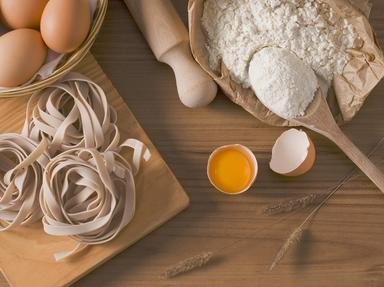Quiz Answer Key and Fun Facts
1. Sidoine Benoit was a famous French Benedictine monk and chef who lived in the 14th century. It is believed he created the famous dish Tripes a la mode de Caen from the beef of a cow and other ingredients. What was unusual about this dish?
2. Lancelot de Casteau lived in the 16th century in Belgium. Not only was he a fine chef, but he was the first person to write a book on which fancy subject?
3. Francois Pierre La Varenne was a famous French chef who also turned to writing. He produced three books on French cuisine. He dedicated and named one of his famous dishes after a member of the aristocracy for whom he had worked. What was this much sought after food?
4. Frenchman Antoine-Augustin Parmentier (1737-1813) was more of a food specialist than a chef, but it was his interest in one vegetable in particular that has well and truly earned him the title of chef. Which vegetable is it?
5. Nicolas Appert (1749-1841) was a famous French chef, confectioner and inventor. What food-related product did he invent?
6. Xavier Marcel Boulestin (1878-1943) was a French chef, restaurateur and author. He became famous when he moved to England and set up restaurants there. He was the first chef in Britain to become famous through which medium?
7. Another French chef! Doesn't any other nation cook? Alexandre Etienne Choron has gone down in history for the dishes he served to the wealthy during the Siege of Paris by Prussia in 1870. What was one of these dishes?
8. Chef Adolphe Duglere from France (surprise, surprise) is famous in the culinary world for a meal he served to several heads of state in 1867. What was this meal called?
9. An American chef, the somewhat controversial Mario Batali, began his culinary career working in which capacity?
10. Heston Blumenthal, owner of The Fat Duck restaurant in Berkshire, England, saw his restaurant win which coveted award in 2005?
Source: Author
Creedy
This quiz was reviewed by FunTrivia editor
WesleyCrusher before going online.
Any errors found in FunTrivia content are routinely corrected through our feedback system.


